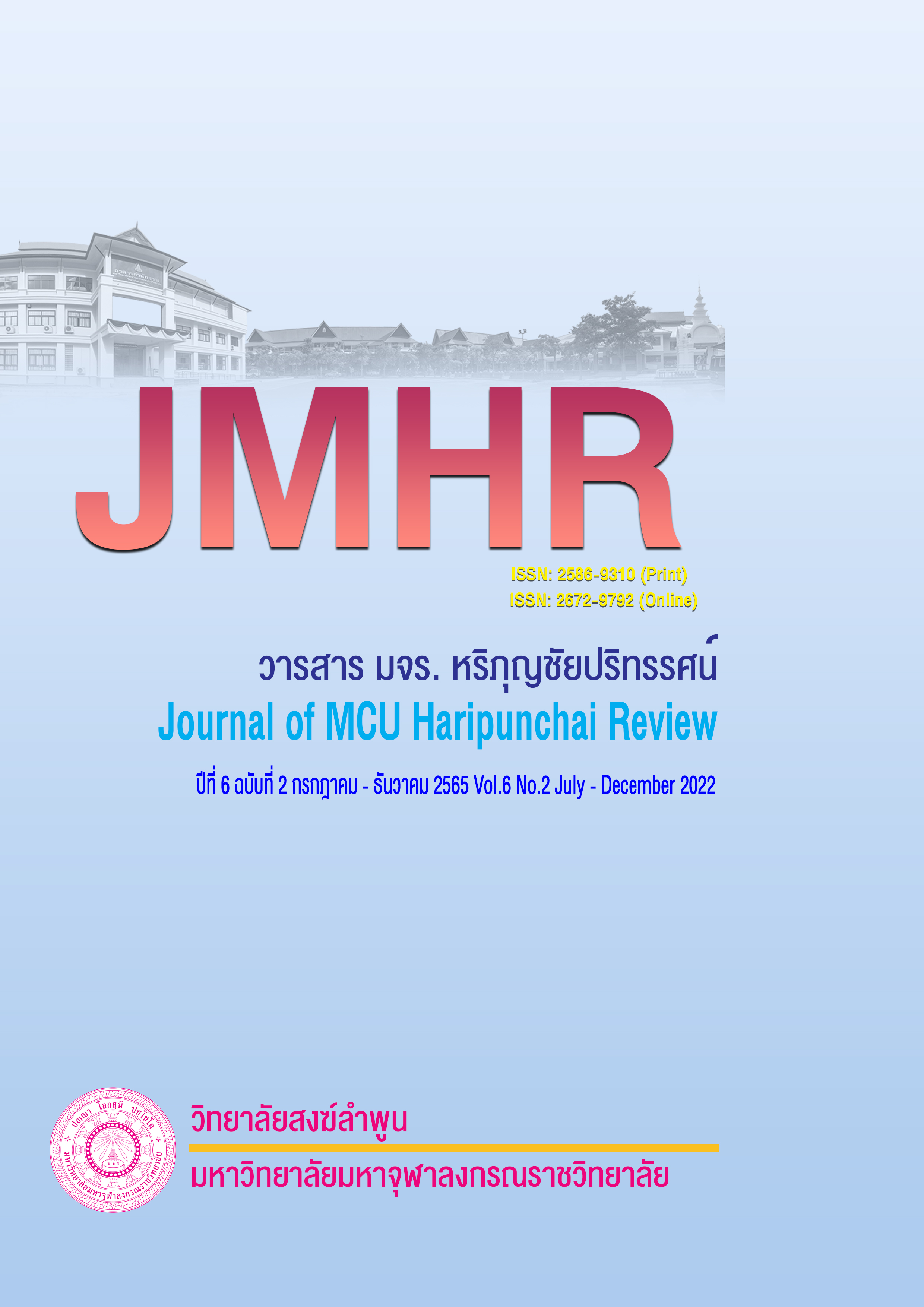Study the Guidelines Engages in the Buddhist Business in Producung Jasmine Rice of Farmers in Chomphu Sub-District, Muang District, Lampang Province
Main Article Content
Abstract
This research article is of 3 objectives: 1) to study the history of rice in Buddhism, 2) to study the problems and factors having effected on producing jasmine rice of farmers in Chomphu Subdistrict, Mueang District, Lampang Province, and 3) to study the guidelines for the Buddhist running jasmine rice producing business of farmers in Chomphu Subdistrict, Mueang District, Lampang Province. This is qualitative research having operated by field study with In-depth interviews from 30 key informants and content analysis.
The findings are as follows:
1.Rice as appeared in Buddhist texts denoted the crops that are the source of nutrition which are of two kinds namely: Buphphạṇchāti implied all kinds of crops originated from rice such as wheat, rice, sticky rice, tares, sorghum, millet and grass. As for the Aparaṇchātit, it implies to vegetables having latter consumed at such as mung beans, soybeans, and sesame.
2.The problems and factors affecting the investment in producing jasmine rice of farmers in Chomphu Sub-District, Muang District, Lampang Province are that : the falling of rice, the low prices, the high fertilizer prices, the high cost of tractors expenditure, rice infectious rice, soil suitability, irrigation water system, the cost of growing jasmine rice and return on investment.
3.The guidelines for the Buddhist running jasmine rice producing business of farmers in Chomphu Subdistrict, Mueang District, Lampang Province are that 1) Vidhuro Foresight, 2) Sufficiency Economy a cultivating a conscience for farmers to know how to be self-reliant, 3) Good Governance, the management measures and government roles 4) Business for Society, a set of sustainable and stable rice development plan; 5) White Strategy, the appropriate management of rice paddy areas, and 6) Buddhist Ecology the producing rice with environmentally and friendly processes.
Article Details

This work is licensed under a Creative Commons Attribution-NonCommercial-NoDerivatives 4.0 International License.
References
มหาจุฬาลงกรณราชวิทยาลัย. (๒๕๓๙). พระไตรปิฎก ฉบับภาษาไทย พ.ศ. ๒๕๓๙. กรุงเทพมหานคร : โรงพิมพ์มหาจุฬาลงกรณราชวิทยาลัย.
กษมา พานแก้ว. (๒๕๕๑). “การพึ่งตนเองของสมาชิกสถาบันเกษตรกรตามปรัชญาเศรษฐกิจพอเพียงของตำบลวังทองอําเภอวังทองจังหวัดพิษณุโลก”. วิทยานิพนธ์ศิลปศาสตรมหาบัณฑิต. สาขาวิชาสังคมศาสตร์เพื่อการพัฒนา. บัณฑิตวิทยาลัย : มหาวิทยาลัยราชภัฏพระนคร.
กลุ่มปฏิบัติการท้องถิ่นไร้พรมแดน. (๒๕๕๘). ข้อเสนอการการแก้ไขปัญหาหนี้สินชาวนาทั้งระบบ. [ออนไลน์]. แหล่งที่มา: http://www.landactionthai.org/land/index.php/content/๔๖๖-๕๗๐๗๐๑-famer.html
เขียน กองจันทึก. (๒๕๕๗). การทำนาข้าว. เชียงใหม่ : สถาบันวิจัยข้าวเชียงใหม่.
ชนวน รัตนวราหะ. (๒๕๕๐). เกษตรอินทรีย์. กรุงเทพมหานคร : สำนักวิจัยพัฒนาเทคโนโลยีชีวภาพ กรมวิชาการเกษตร กระทรวงเกษตรและสหกรณ์.
พระพรหมคุณาภรณ์ (ป.อ.ปยุตฺโต). (๒๕๕๓). พจนานุกรมพุทธศาสตร์ ฉบับประมวลศัพท์. พิมพ์ครั้งที่ ๑๕. กรุงเทพมหานคร : โรงพิมพ์มหาวิทยาลัยมหาจุฬาลงกรณราชวิทยาลัย.
มนูญ มุกข์ประดิษฐ์. “ความรู้จักพอประมาณในพระพุทธศาสนาเถรวาทกบหลักเศรษฐกิจพอเพียงในพระราชดำริ”. วิทยานิพนธ์พุทธศาสตรดุษฎีบัณฑิต. บัณฑิตวิทยาลัย : มหาวิทยาลัยมหาจุฬาลงกรณราชวิทยาลัย.


